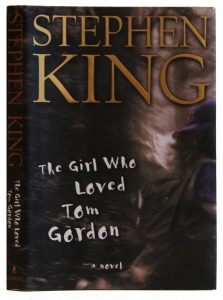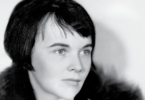While I was putting together a list of scary books that were turned into scary movies, Stephen King’s tomes came up time and again, making it obvious that the ‘King of Horror’ deserves his own article. To date, King has published 64 novels, six non-fiction books, and around 200 short stories. The nonfiction books include Danse Macabre, a cultural survey of the horror genre published by Everest House in 1981.
Whether you’re just beginning to collect, or a seasoned pro, StephenKing.com offers a comprehensive reference for collectors on first issue points. This information is often hard to come by, so having it is one place is an invaluable resource.
This article is covering just a handful of his many stories, focusing on the most well-known and collectible. Picking just a few titles from King’s extensive bibliography may cause some Rage or Misery, but we’re taking The Stand and doing the Needful Things here, so relax. If it causes you Desperation or Insomnia, call Dr. Sleep at The Institute (or comment below).
Carrie (1974)

King’s first published novel, Carrie was released April 5, 1974. The book was reportedly rejected by 30 publishers before being picked up by Doubleday, who offered the author an advance of $2,500. The first print run of 30,000 initially sold just 13,000 copies. The very next year the paperback sold over a million copies. First printings will have “First Edition” on the copyright page and P6 code printed in the gutter of p.199.
The epistolary novel is about a telekinetic teenage outcast, Carrie, who exacts revenge on her high school after being cruelly treated by classmates.
The book was adapted into a blockbuster movie in 1976 starring Sissy Spacek as Carrie.
Salem’s Lot (1975)

Quintessential Rare Books, LLC
King’s next published work, Salem’s Lot, was released the following year in 1975. Currently listed on Biblio is a rare signed first edition of Salem’s Lot. This is one of the highest-priced Stephen King books, listed at $12,500. It was printed with the wrong price ($8.95 instead of $7.95), and there were only 25 copies of this misprint. Those 25 copies were kept in-house at Doubleday, and from those copies, only a handful reportedly escaped revision via price-clipping. These misprints also included ‘Father Cody’ instead of ‘Father Callahan’ on the Dustjacket. The majority of first editions were printed with the correct $7.95 price, and ‘Father Callan’ on the DJ, with “First Edition” on the copyright page and Q37 on page 439.
Salem’s Lot revolves around the writer Ben Mears, who returns to his childhood hometown to write about a spooky house, only to discover vampires are taking over the town. This horror novel also introduces the character of Father Callahan, who is a re-occurring character in many of King’s Dark Tower series novels: The Dark Tower V: Wolves of the Calla, The Dark Tower VI: Song of Susannah and finally The Dark Tower. The town, Jerusalem’s Lot, or Salem’s Lot for short, is revisited in multiple short stories as well: “Jerusalem’s Lot” and “One for the Road”, both from King’s story collection Night Shift (1978).
Salem’s Lot was made into a television mini-series in 1979 and again, in 2004. There are rumors of a feature film in the works as of fall 2019.
The Shining (1977)
His third novel and a true horror classic, The Shining was King’s first hardback bestseller. Published in 1977, the first editions published by Doubleday have “First Edition” on the copyright page and R49 code printed on the bottom inside corner of page 447.
The novel was influenced by King’s 1974 visit to the Stanley Hotel, a historic hotel in Colorado, as well as his personal struggles with alcoholism.
In 1980 the book was adapted into the classic horror film starring Jack Nicholson and directed by Stanley Kubrick.
Cujo (1981)
Cujo is a psychological horror novel about a rabid St Bernard. Published in 1981 by Viking, the novel has no chapters and no page breaks.
Cujo is a friendly family pet until he gets bit by a rabid bat and begins killing off people in their small town. For the majority of the novel, Donna Trenton and her son Tad are trapped in their Ford Pinto by the dangerous dog.
Cujo was made into a film in 1983.
Pet Sematary (1983)
Like most King novels, Pet Sematary takes place in Maine. King was reluctant to publish this book, citing it as the darkest and most frightening book he has written. After shelving it for a time he decided to go ahead with the publication, mostly because he needed a book to fill the contract he had with Doubleday.
Louis Creed, a doctor from Chicago, takes a position at the University of Maine as the director of campus health services. He moves his wife and two young children, Ellie and Gage, to a large house in a small town near the University. Although rural, the house is situated next to a dangerous road that claims the lives of many local pets. The local children have made a ‘Pet Sematary’ specifically for burying those that lost their lives to speeding trucks. Louis quickly becomes friends with an older man in the neighborhood, Jud, who shows Louis a secret burial ground just past the ‘Pet Sematary’ that is rumored to reanimate corpses that are buried in it.
Pet Sematary has been adapted into two films, one in 1989 and another in 2019.
It (1986)
Published in 1986 by Viking, It is Stephen King’s 22nd published book. It is over 1138 pages long – King’s second-longest after The Stand, which is 1153. Inspired by the story of the Three Billy Goats Gruff, this multi-generational horror story delves into loss of innocence and childhood fears. Although It does take the form of a sinister clown, It also takes on other scary forms dependant on the person it is terrorizing and their darkest fears. Although King generally publishes at least one novel per year, It took him 4 years to write.
The 2017 film became the highest-grossing horror movie ever, with IT Chapter 2 being released in the Fall of 2019.
Misery (1987)
Misery is a psychological horror-thriller published in 1987 by Viking. It was the 25th book published by King.
When popular writer, Paul Sheldon, is injured in a car accident, a former nurse and superfan Annie Wilkes brings him to her house to recover. Sheldon soon realizes that Annie is unstable and holding him as her prisoner. As she is reading the final installation of his Misery Chastain romance series, Annie becomes distraught after the main character gets killed off. In control of his pain killers and his life, Annie forces Sheldon to burn the manuscript for the crime novel he hopes will change his career trajectory from romance novels. Sheldon is forced to fight for his life and his artistic integrity.
Misery was adapted into a film in 1990 starring Kathy Bates and James Caan.
The Dark Half (1989)
The Dark Half was the second best-selling novel of 1989, behind Tom Clancy’s Clear and Present Danger. First editions, published in 1989 by Viking, will have a full number line starting with 1.
King wrote the novel in 1985 after being outed in for writing under the pseudonym Richard Bachman. The Dark Half revolves around a writer that has a sinister parasitic twin. Thad Beaumont is a mediocre literary novelist, but a successful crime writer under the pen name “George Stark.” After his alter ego is outed, Beaumont has a mock funeral for Stark – except in true King fashion, Stark emerges from the grave, going on a killing spree after anyone he feels was responsible for his death.
The novel was adapted into a feature film of the same name in 1993, directed by George A. Romero.
The Girl Who Loved Tom Gordon (1999)
Published in 1999 by Scribner, The Girl Who Loved Tom Gordon is a psychological horror novel about a young girl, Trisha, who gets lost in the woods while hiking with her family. As the days pass on Trisha begins to hallucinate, talking to several people including her idol the baseball player Tom Gordon, who was a pitcher for the Boston Red sox in the 1990s. Trisha’s struggles with the concept of God throughout the book make it his most spiritual. This is King’s second shortest book and his youngest protagonist.
Shortly after it was published King was struck by a car and nearly died. He was in hospital for three weeks and didn’t write for five.
In 2004, Simon & Schuster published a pop-up book of The Girl Who Loved Tom Gordon illustrated by Alan Dingman.
Revival (2014)
Revival was published in 2014 by Scribner. The novel was inspired by The Great God Plan, an 1894 fantasy novella by Arthur Machen, as well as Mary Shelley’s Frankenstein.
Revival tells the story of a young minister who renounces God after his wife and child are killed in a horrific accident. The minister, Charles Jacob, later becomes a faith healer and harnesses secret electric properties to heal people’s addictions and sicknesses. He experiments with reanimation, attempting to communicate with the afterlife to find out the destiny of his deceased wife and child.
Amy C. Manikowski is a writer living in Asheville, NC.















I would like to purchase some first edition mystery books, but don’t see where this is on your site.
Hello